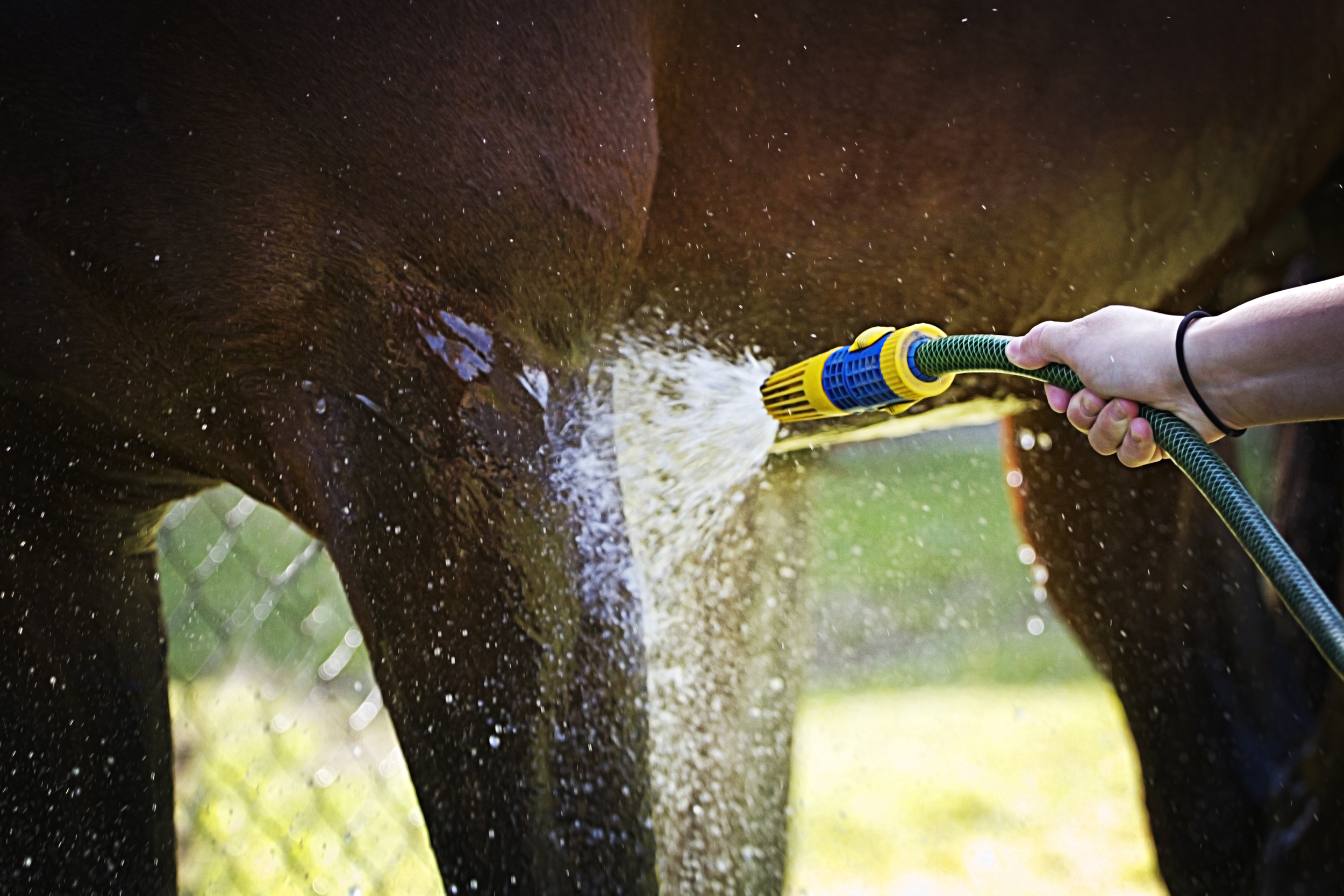Your horse’s leg-care routine doesn’t require a lot of money or high-tech machines. A few simple, easy-to-do measures can help preserve your horse’s legs and keep him sound. Minimize your horse’s risk for injury by warming him up properly, be cautious about the footing you ride him on, and have a thorough post-workout routine that includes leg care.
First Things First, An Inspection
Every horse’s legs look a little different, so it’s up to you as your horse’s owner to know what is normal and what should raise a concern. Familiarize yourself with any bumps and lumps—if your horse is sound, it’s likely these are normal for him. A leg inspection is the most basic form of care and can help catch anything that is unusual for your horse.
[READ: YOUR HORSE’S LUMPS & BUMPS]
To inspect your horse’s legs, tie him up where he’s standing on a flat surface and you can bend down to touch his legs safely. Run your hand down each of his limbs starting from the elbow all the way down to the coronary band. As you run your hand down, take note of any scrapes, swelling, or anything else that is unusual.
Post-Workout Care Options
In addition to inspecting your horse’s legs, you can provide him with therapies that will help to promote healing.
Cold Therapy: Cold therapy or “icing” is a common post-workout leg care therapy. Icing can help prevent injuries, treat new injuries, and manage old ones. There are various forms of ice boots that you can use but using cold water from a hose is the simplest form of cold therapy as any temperature decrease will help reduce inflammation. Icing your horse after hard workouts or upon sight of a new injury will help him recover quicker. Be cautious that icing for any longer than 20 minutes can cause damage, however, icing in general is the safest therapy for your horse.

Liniment: Liniments work to cool the leg. As your horse is exercising, heat to builds up in leg tissues which helps keep the structures pliable—which is why a good warmup is also critical to leg care. Liniments are usually alcohol- or menthol-based, which have a cooling effect. Using a liniment like Corona® Liniment with menthol and eucalyptus will help increase circulation where it’s applied to promote healing. Pair this with an ice therapy for long-lasting cooling effects without damage.

Poultice: Poultice helps to cool your horse’s leg by drawing heat from the injury, reducing blood flow, and minimizing inflammation. When applying poultice, you’ll receive the longest-lasting effects by covering the applied area with a wet paper bag and wrapping—the wet paper bag is key in keeping the area moist and cool.
Wrapping: Wrapping your horse’s leg following a hard workout can help prevent stocking up by closing the spaces between cells where fluid can collect. While wrapping is a traditional method that works for general “stocking up,” it’s important to seek veterinary advice before using wraps if you’re unsure why your horse’s leg is collecting fluid. If you’re not experienced wrapping legs or aren’t confident in how to apply them, consult your veterinarian. Poorly wrapped standing bandages can cause more damage than good. If you apply standing wraps, only use them for six to eight hours.
[READ: HOW TO APPLY STANDING WRAPS]
Walk Away with This
Therapies encourage the natural healing process and help to return your horse’s legs to pre-workout state. Even if you don’t compete with your horse or ride him through a hard workout, leg-care therapies can help with aches and pains that come with aging or old injuries
EDITOR’S NOTE: Welcome to the TLC blog, sponsored by Manna Pro, where we’ll share tips about the extra, pampering things you can do for your horse…just because you love him. Our pointers will help you foster your horse’s wellbeing by boosting his health…or just making him happy.

ENTER THIS MONTH’S GIVEAWAY WITH MANNA PRO
Three winners randomly selected will each receive a Corona gift basket containing:
- (2) Corona Liniment (~$20 value)
- Corona Ointment ($10.99)
- Corona Fung-A-Way (~$9)
- Corona Shampoo (~$10)

